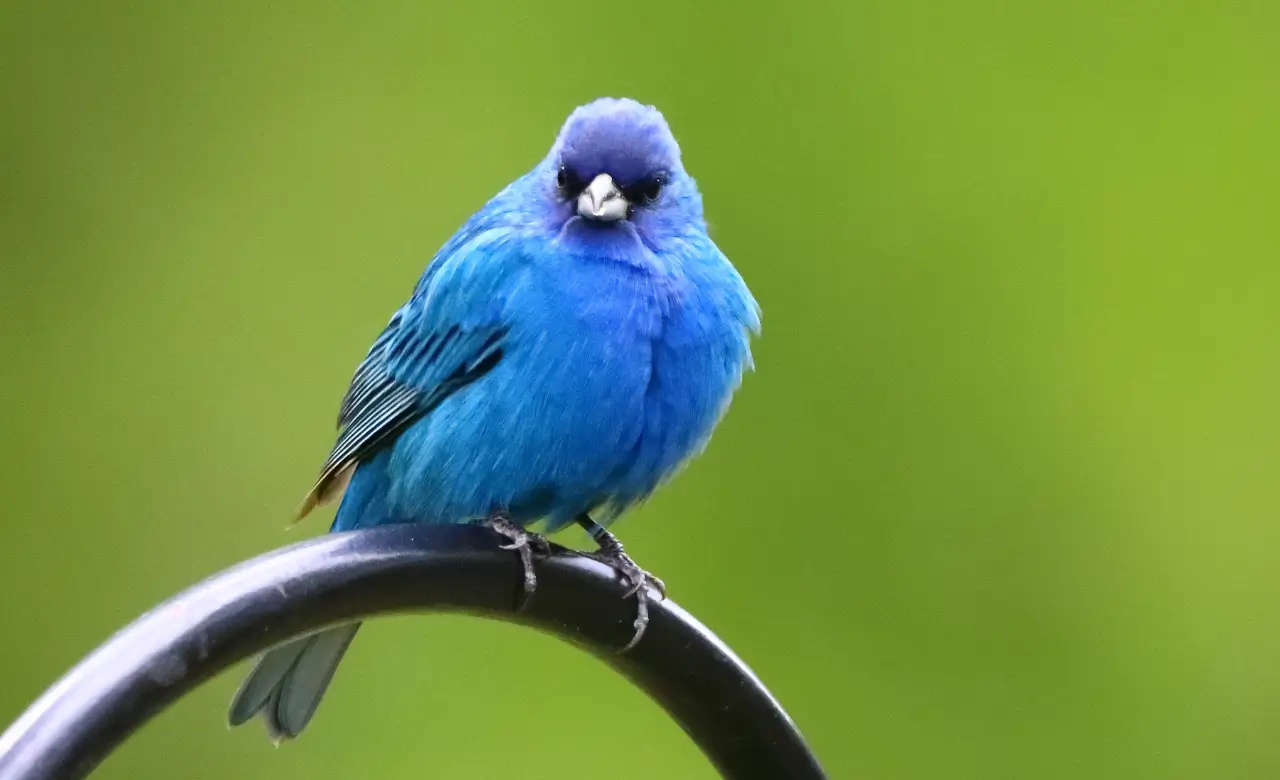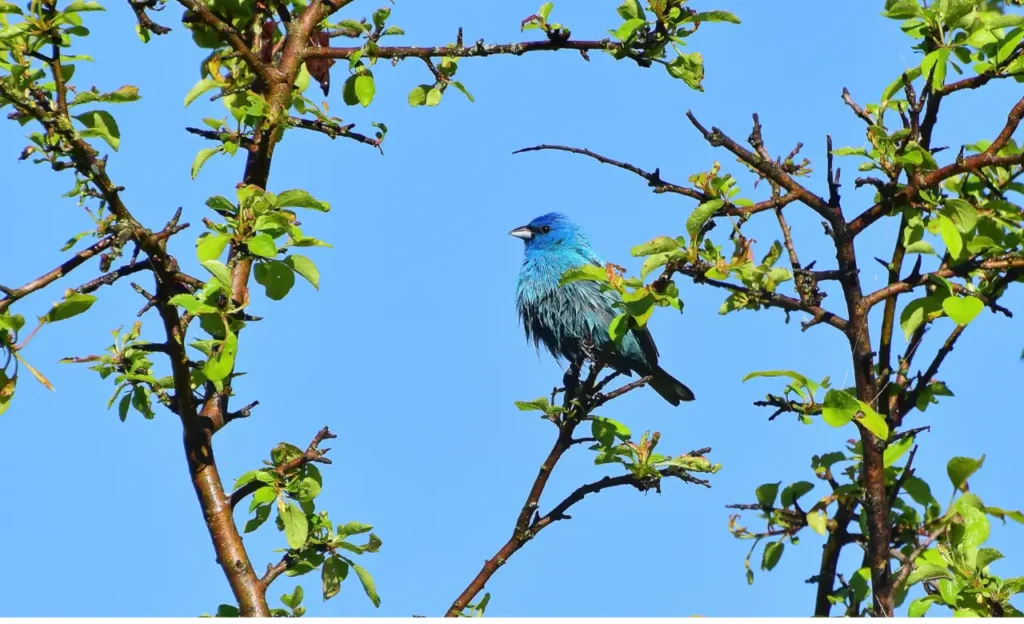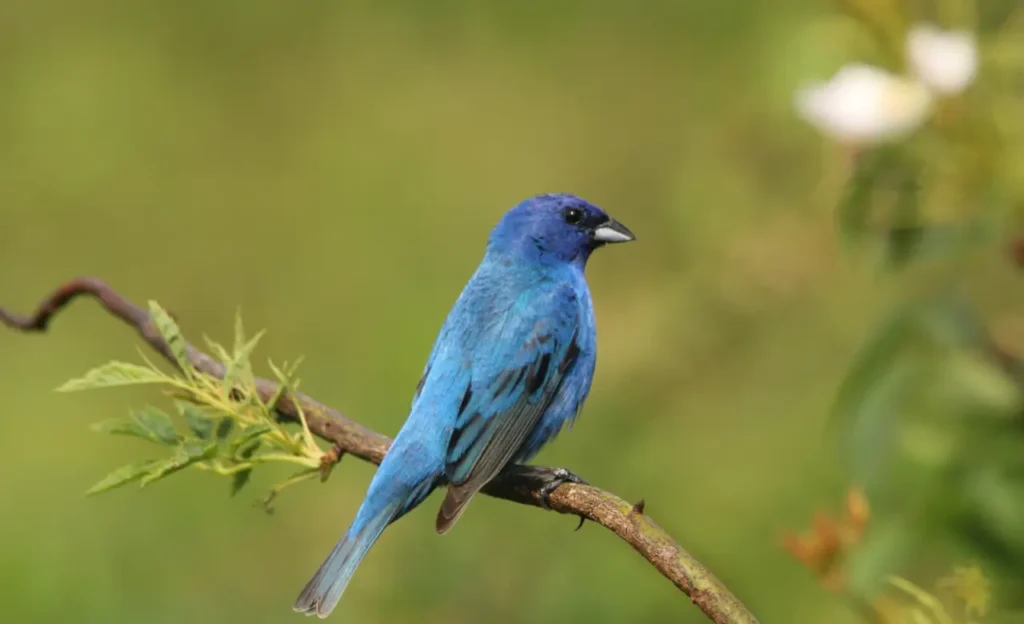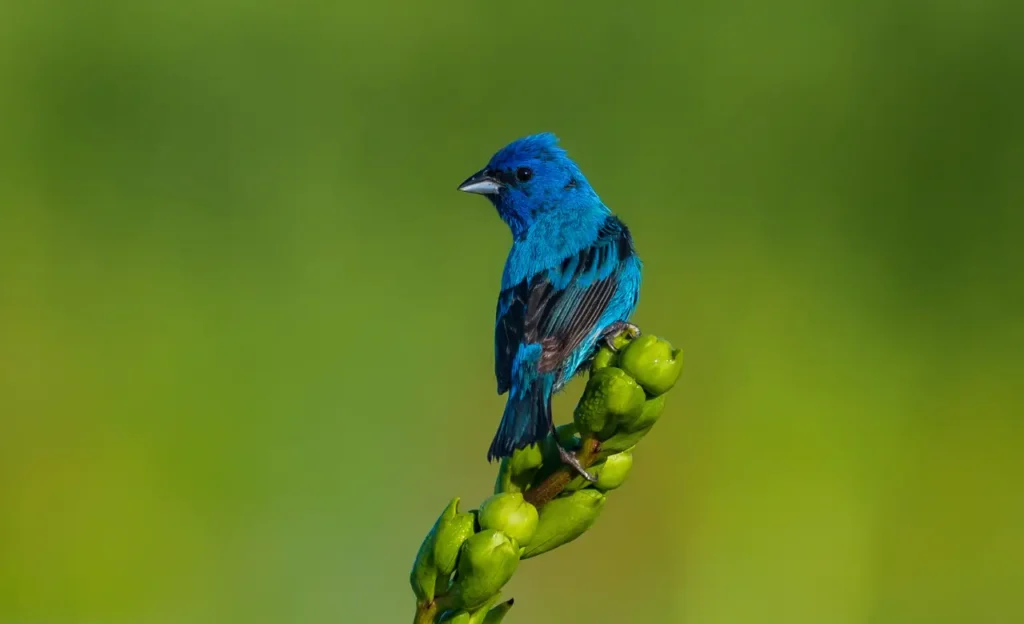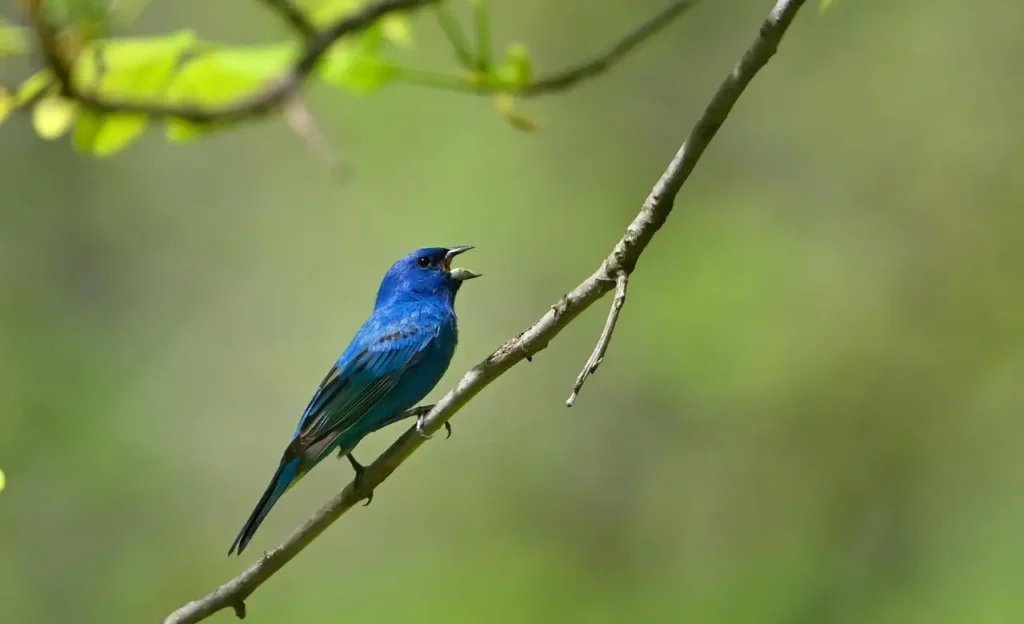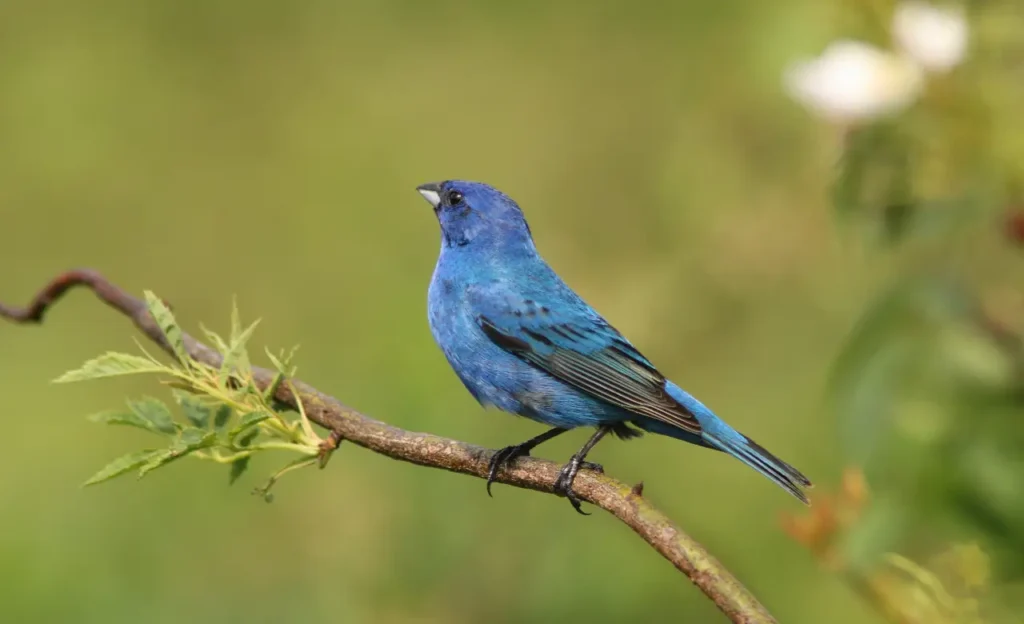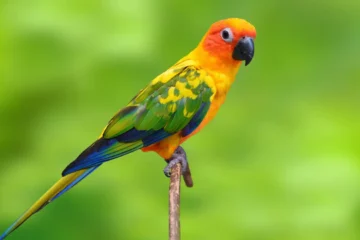The Indigo Bunting is a small songbird that brightens up summer landscapes. Males are known for their striking blue feathers that shine in sunlight.
Females are a soft brown and blend easily into their surroundings. These birds are most often found in open woodlands, fields, and along roadsides where shrubs grow. They migrate long distances. Their cheerful song makes them a favorite sight and sound for birdwatchers.
Image of Indigo bunting
Price of Indigo Bunting
Indigo Buntings are wild songbirds and are not legally sold or kept as pets in the USA. They do not have a standard market price. These birds are protected under the Migratory Bird Treaty Act.
Lifespan of Indigo Bunting
Indigo Buntings usually live around 8 to 10 years in the wild, though most survive only a few years due to predators. They can live a little longer than their wild lifespan in captivity, with proper care.
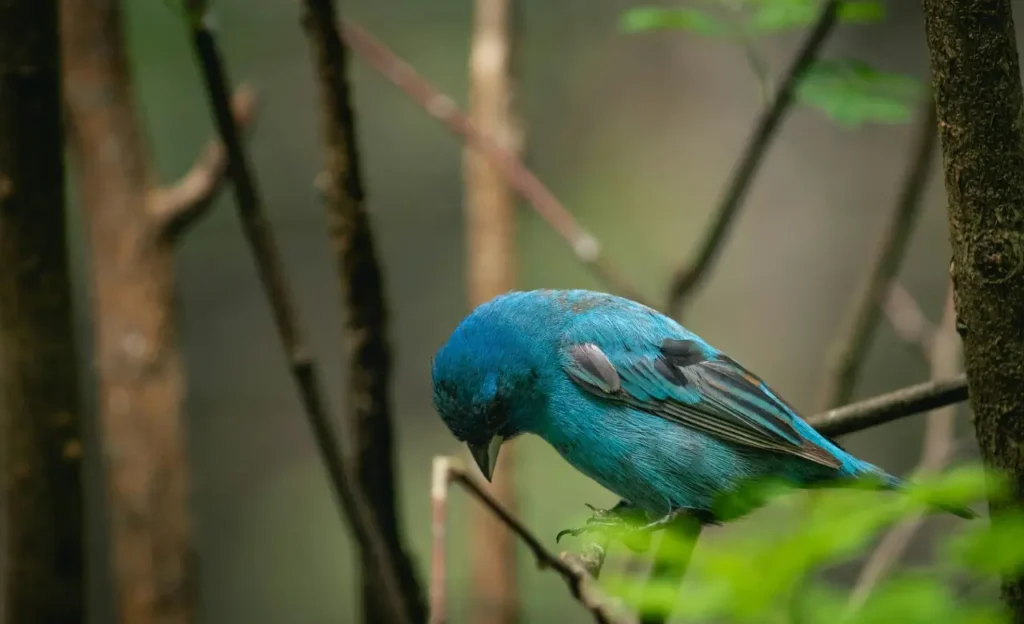
Characteristics Indigo Bunting
The Indigo Bunting has many unique and attractive features.
| General Characteristic | Indigo Bunting Feature |
| Scientific Name | Passerina cyanea |
| Size | About 5 to 5.5 inches long |
| Color | Males are bright blue in summer, and females are brown |
| Habitat | Found in fields, forest edges, and open woods |
| Diet | Eats seeds, berries, and small insects |
| Song | Males sing a cheerful, high-pitched song |
| Migration | Migrates at night to Central and South America |
Interesting facts about the Indigo Bunting
These birds are very interesting and captivating due to their distinctive behaviour.
1. A Bird That Changes Colors with the Light
The Indigo Bunting is not actually covered in blue pigment. Its feathers are brown. The microscopic structure of the feathers bends light in such a way that they appear bright blue in the sunlight.
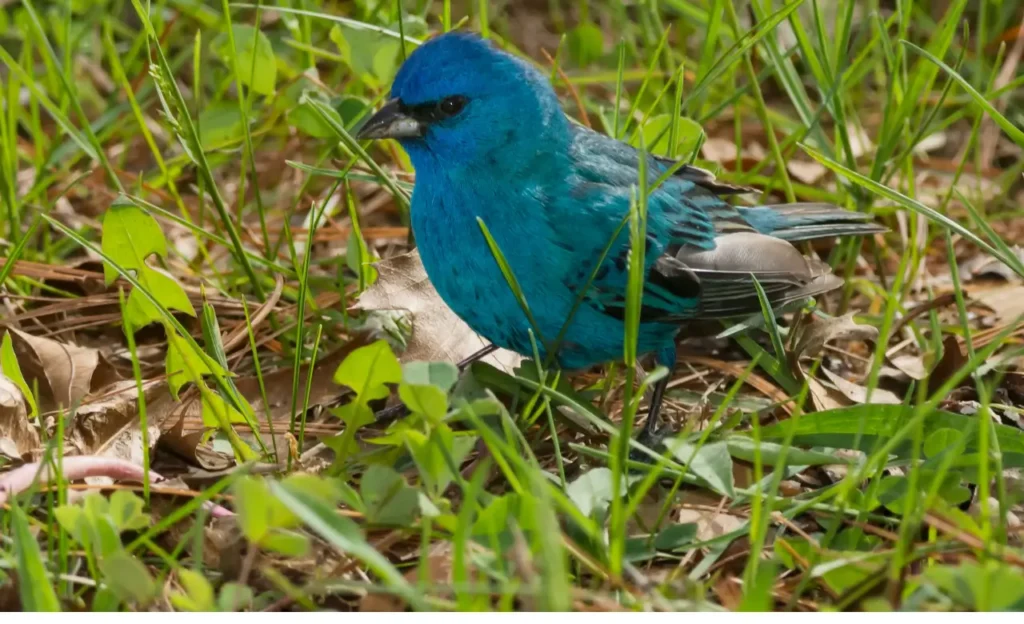
The same bird can look darker or even dull brown on cloudy days or in low light. This unique trick of light makes them stand out as one of the most striking songbirds.
2. Males Sing to Claim Their Territory
Male Indigo Buntings are known for their sweet and high-pitched songs that carry across fields and forests. They often sing from the very top of trees or powerlines to let rivals know that the area is taken. Their songs are a strong defense against other males. These musical calls can be heard all summer long.
3. Nighttime Migrants Guided by the Stars
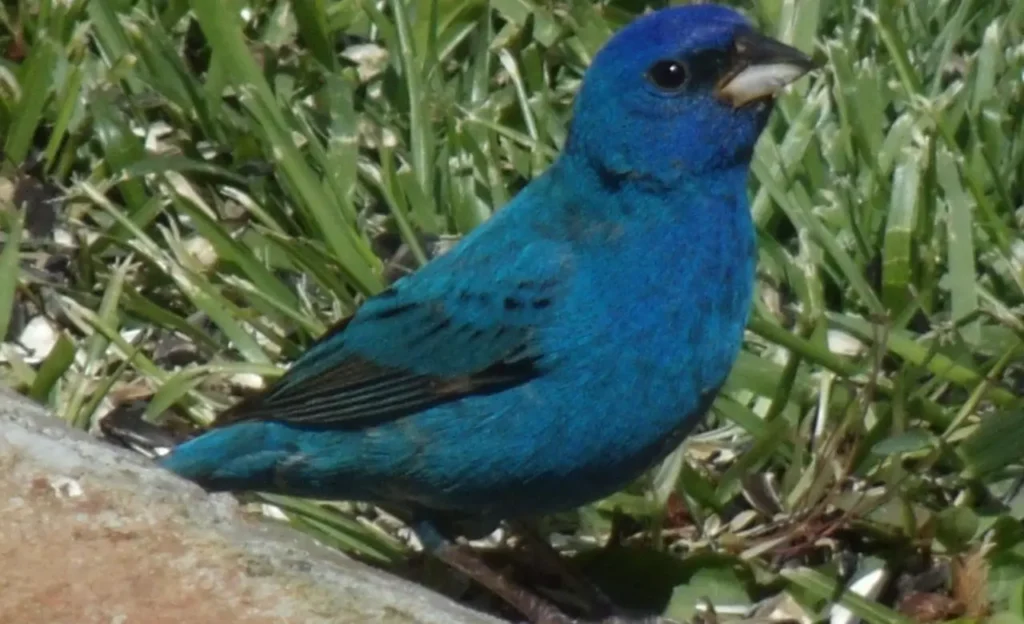
Indigo Buntings travel mostly at night during migration. What makes them truly special is that they use the stars to guide their path. Studies show they can read the position of constellations and even the North Star to stay on course.
4. Females Build Hidden Nests on Their Own
The female Indigo Bunting does all the hard work when it comes to raising young. She carefully builds a small nest hidden in tall grass, shrubs, or low trees.
The nest is camouflaged to keep eggs safe from predators. She feeds them without much help from the male once the young hatch.
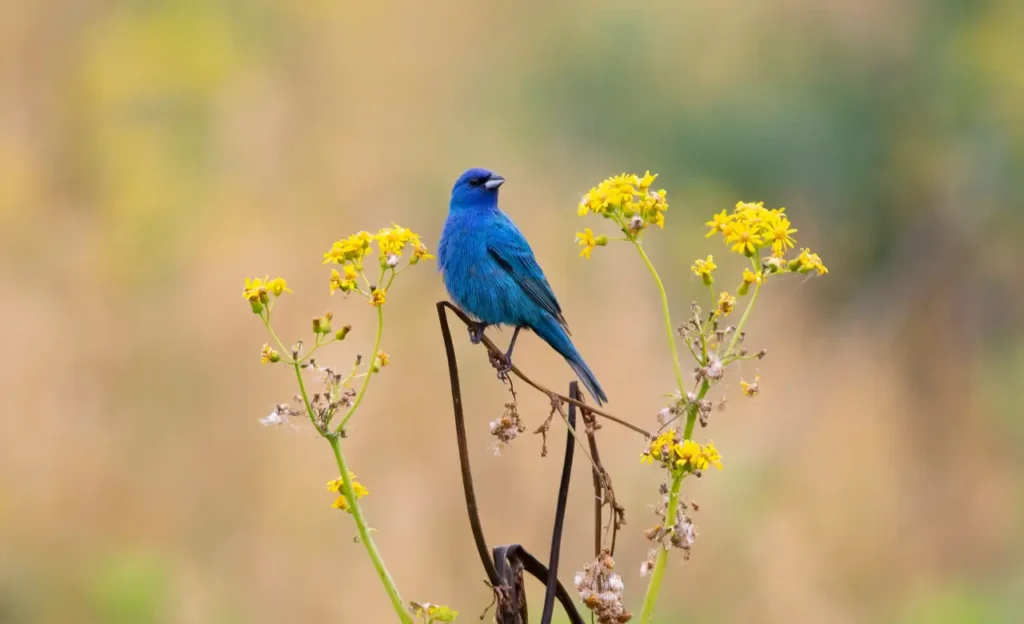
5. Different Songs in Different Regions
Indigo Buntings also have variations in their songs depending on where they live. Birds from one area may sing with slightly different patterns compared to those from another area.Young males learn their tunes by listening to nearby adults. Therefore, songs evolve with time and place.
6. Bright Colors Only for Breeding Season
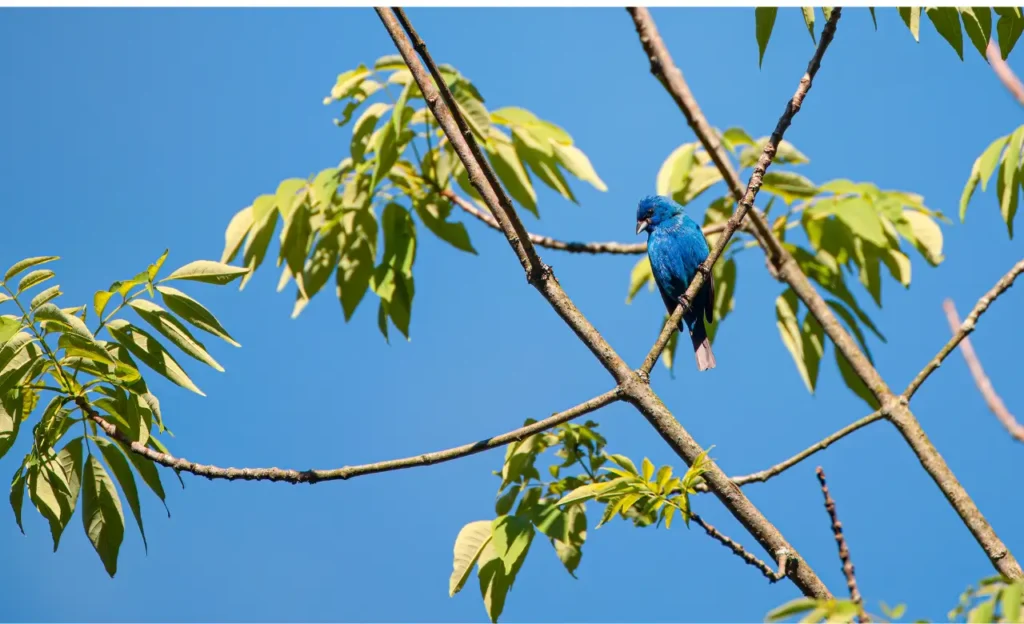
The male Indigo Bunting shows off his dazzling blue feathers only during the breeding season. He molts into more brown feathers after summer ends, which helps him blend in with his surroundings.
This seasonal change protects him during migration and winter. Being too bright could make him an easy target.
7. A Wide Diet of Seeds and Insects
The Indigo Bunting has a flexible diet. They eat insects like grasshoppers, caterpillars, and beetles in spring and summer to provide extra protein for raising chicks. Their diet shifts to seeds and berries during fall and winter. They adapt well to changing seasons.
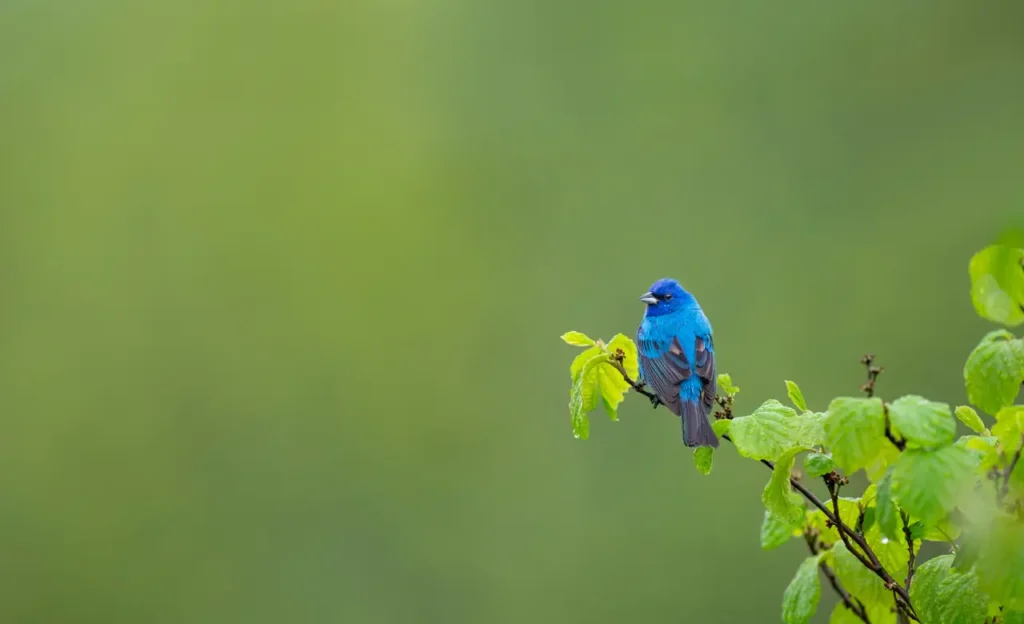
8. Long Journeys Across Continents
These little birds make an incredible journey every year. They migrate from North America to Central and South America for the winter. They can travel thousands of miles, showing remarkable stamina and survival skills.
9. Known as “Blue Canaries” by Farmers
Indigo Buntings are nicknamed “blue canaries.” Farmers once noticed their cheerful songs filling the fields during planting season.
The name stuck because of their bright blue feathers and pleasant voices. This nickname reflects the bird’s close connection to rural landscapes.
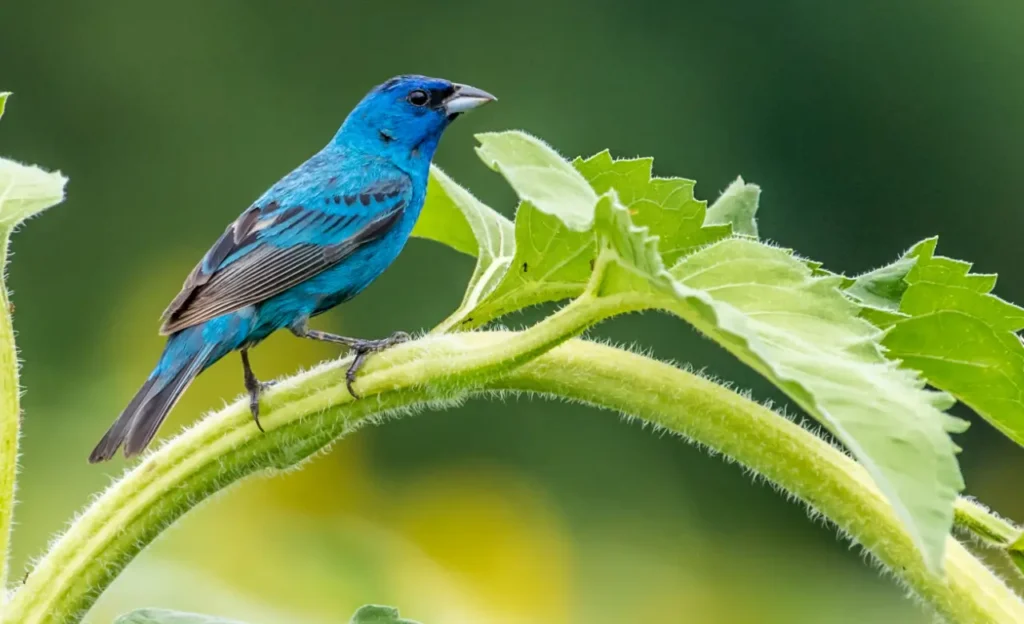
10. Lifespan Longer Than Most Small Birds
Indigo Buntings can live surprisingly long lives. They usually live up to 7 years, but some birds have been recorded living more than 10 years. Their survival depends heavily on escaping predators and safely completing migration each year.
11. A Symbol of Summer in the Countryside
Spotting an Indigo Bunting marks the true arrival of summer in rural areas. Their bright blue plumage glowing against green fields is an unforgettable sight. They bring color and energy to the countryside.
12. One of the Most Studied Migratory Birds
Scientists have long been fascinated by the Indigo Bunting because of its unique star navigation. Countless studies have been carried out to understand how these birds learn to read the night sky.
This research has made the Indigo Bunting an important bird for studying animal migration and behavior.
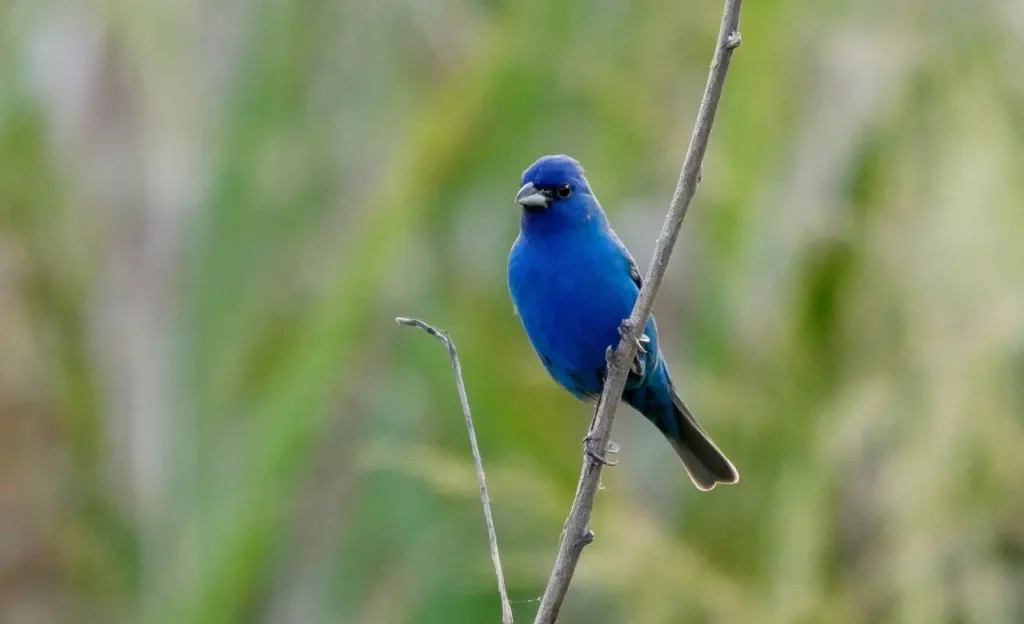
Sightseeing of Indigo Bunting
Indigo Buntings are commonly seen across the USA in forests, grasslands, and along migration paths, especially in the East and Midwest.
| Location | City/State |
| Central Park | New York, New York |
| Shawnee National Forest | Southern Illinois |
| Great Smoky Mountains National Park | Tennessee / North Carolina |
| Cuyahoga Valley National Park | Ohio |
| Everglades National Park | Florida |
| Shenandoah National Park | Virginia |
| Ozark National Forest | Arkansas |
| Big Thicket National Preserve | Texas |
| Hoosier National Forest | Indiana |
| Daniel Boone National Forest | Kentucky |
| Chattahoochee National Forest | Georgia |
| Monongahela National Forest | West Virginia |
| Buffalo National River Area | Arkansas |
| Tallgrass Prairie National Preserve | Kansas |
| Mississippi River Flyway | Mississippi / Louisiana |
Photography tips for the Indigo Bunting
Here are some tips to take a good photo of these beautiful blue birds.
- Visit open fields and forest edges during early morning when Indigo Buntings are most active.
- Use a zoom lens to capture close shots without disturbing the bird.
- Position yourself with the sun behind you to highlight the bird’s bright blue feathers.
- Stay patient and quiet, as sudden movement can scare them away.
- Look for them perched on fences, shrubs, or tall grasses for the best natural shots.
Final thoughts about indigo bunting
The Indigo Bunting is more than just a beautiful bluebird. It is a fascinating species with unique behaviors and survival skills. It sings to defend its territory and navigate the stars during migration. This bird continues to amaze scientists and bird lovers.
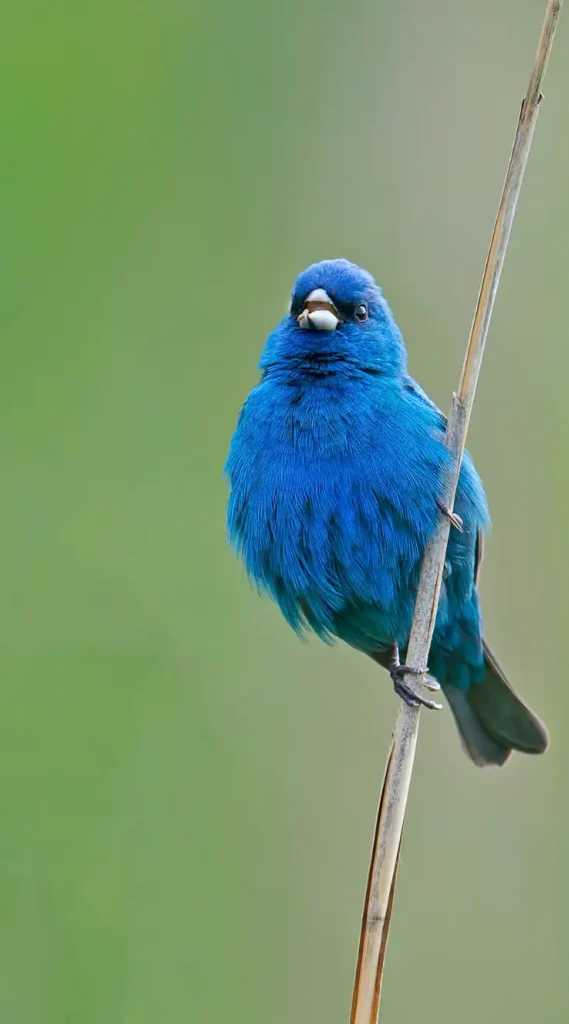
FAQs
Q1: How to attract an Indigo Bunting?
Attract Indigo Buntings by providing their preferred foods like millet, nyjer seeds, sunflower chips, and live mealworms
Q2: What does an Indigo Bunting sound like?
Male Indigo Buntings whistle a bright, lively song of sharp, clear, high-pitched notes that lasts about 2 seconds.
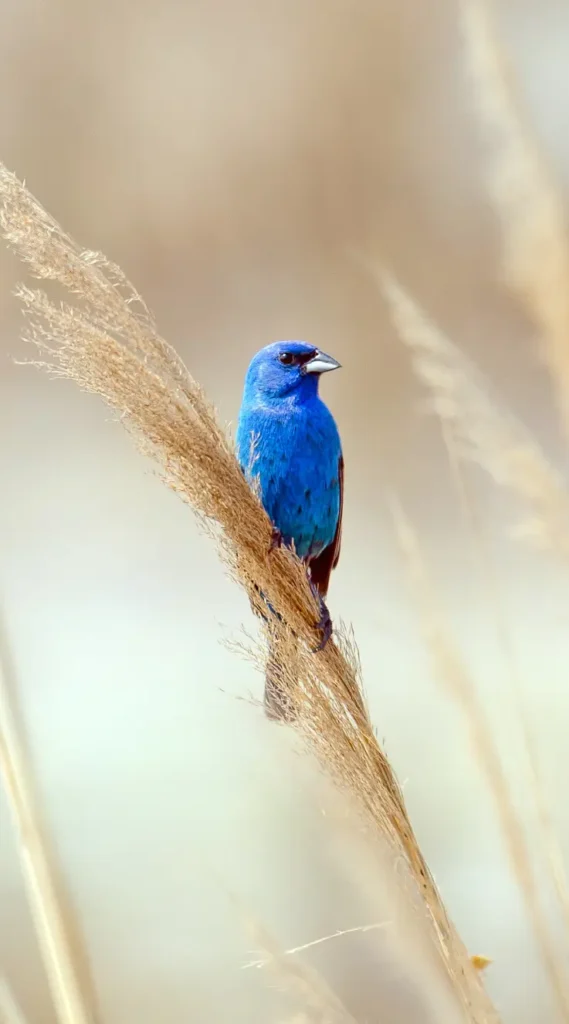
Q3: What does an Indigo Bunting look like?
Indigo Bunting is a small songbird with a short, conical bill, and adults of different genders have distinct appearances.
Q4: What does an Indigo Bunting eat?
Indigo Buntings primarily eat seeds, berries, and insects, including grasshoppers, caterpillars, and beetles.

